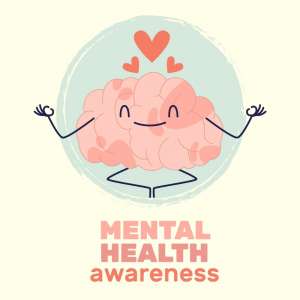Breathing is a fundamental life force that influences every aspect of our health. Whether you are starting your journey toward a holistic wellness regimen or looking to improve your self-care routine, the importance of breathing exercises for beginners cannot be overstated. Deep, controlled breathing can enhance mental clarity, reduce stress, and even improve chronic pain management.
Why Breathing Exercises Matter for Holistic Health
Breathing is often overlooked as a powerful tool for improving both physical and mental health. By incorporating simple, mindful breathing techniques into your daily routine, you can help balance your mind and body. Beginners often experience significant benefits like reduced anxiety, better sleep, and enhanced focus, which are all critical to a holistic approach to health. The practice involves not just inhaling oxygen but allowing your body and mind to align, facilitating energy flow and emotional balance.
Top Breathing Exercises for Beginners
-
Diaphragmatic Breathing (Belly Breathing): This method involves focusing on deep inhalations through the diaphragm rather than shallow chest breathing. Diaphragmatic breathing helps reduce stress, increase oxygen intake, and improve lung capacity.
-
4-7-8 Breathing: Created by Dr. Andrew Weil, this method promotes relaxation and helps with sleep issues. Inhale for 4 seconds, hold the breath for 7 seconds, and exhale slowly for 8 seconds.
-
Alternate Nostril Breathing (Nadi Shodhana): This technique is rooted in yoga and helps to balance the nervous system, calm the mind, and enhance lung function. It's especially helpful in improving focus and reducing stress.
Holistic Approaches to Health: Beyond the Basics
Holistic health is more than just the absence of illness; it's about nurturing every facet of your being—mind, body, and spirit. This philosophy emphasizes natural remedies, healthy lifestyle choices, and mindfulness as a way of life. Practices such as yoga, meditation, nutritional therapy, and breathing exercises work in synergy to promote overall wellness. By adopting a holistic wellness regimen, you embrace a lifestyle that seeks balance and harmony, supporting long-term physical and emotional health.
Integrating Breathing into a Holistic Wellness Regimen: The integration of mindful breathing exercises amplifies the effectiveness of any wellness routine. Regular practice not only boosts your energy levels but also reduces the mental fog that can arise from stress, anxiety, or exhaustion.
Creating a Health Wellness Program: A Comprehensive Approach
A health wellness program isn't a one-size-fits-all solution. To craft a personalized plan, consider a few essential components:
- Physical Exercise: Incorporate regular movement, from gentle stretching to cardiovascular activities, tailored to your body's needs.
- Nutritional Guidance: Focus on a balanced diet rich in fruits, vegetables, lean proteins, and whole grains.
- Mental Health Care: Practices such as meditation, mindful breathing, and self-care are crucial to maintaining mental well-being.
- Holistic Therapies: Complementary therapies like acupuncture, massage, and herbal remedies can offer additional benefits.
This comprehensive wellness program targets not only the physical but also emotional and mental aspects of health, empowering you to live a balanced life.
Self-Care Wellness: Putting Yourself First
Self-care has become a buzzword, but its true essence lies in consistently nurturing your own well-being. Self-care wellness isn't indulgent—it's essential. Simple self-care practices can include setting aside time each day for breathing exercises, taking breaks, practicing mindfulness, or even enjoying a warm bath. This practice rejuvenates your mind and body, providing the resilience needed to face life's challenges.
Breathing for Self-Care:
Breathing exercises play an integral role in self-care wellness. By practicing techniques such as diaphragmatic breathing or 4-7-8 breathing, you reduce the body's stress response, improve sleep, and allow your nervous system to rest. In moments of overwhelming stress or anxiety, conscious breathing can be a life-changing tool.
Chronic Pain Exercises: Easing Discomfort Holistically
Managing chronic pain often requires a multi-faceted approach, and breathing exercises are an essential part of this strategy. Chronic pain is more than just physical discomfort—it's closely tied to mental and emotional states. Chronic pain exercises, including breathing techniques, meditation, and gentle yoga, offer natural ways to reduce tension and alleviate discomfort.
- Breathing for Pain Management: By practicing controlled breathing, individuals with chronic pain can activate their parasympathetic nervous system, which helps to relax muscles and reduce the sensation of pain. Regular practice of diaphragmatic breathing or alternate nostril breathing can significantly lessen pain flare-ups.
Self-Care for Mental Health: Nurturing the Mind
Mental health is just as important as physical well-being. Integrating self-care practices such as meditation, relaxation techniques, and breathing exercises can help maintain a healthy mental state. When you take a holistic approach, mental health care extends beyond professional support—it includes daily habits that sustain emotional stability.
Breathing Exercises for Mental Health: Mindful breathing can help manage conditions like anxiety, depression, and stress. Techniques like box breathing (inhale, hold, exhale, hold) are particularly effective for grounding the mind and reducing anxious thoughts.
How to Improve Your Energy Through Holistic Practices
Feeling drained? Low energy often stems from imbalances in physical, mental, and emotional health. Rather than relying solely on caffeine or sugar, you can enhance your energy levels naturally through holistic methods. Breathing exercises, proper nutrition, movement, and mindfulness practices are some of the best ways to revitalize your energy reserves.
Energy-Boosting Breathing Exercises:
-
Kapalbhati (Skull-Shining Breath): This advanced technique involves short, forceful exhalations and passive inhalations. It stimulates the brain, clears nasal passages, and invigorates your entire system, leaving you refreshed and energized.
-
Breath of Fire: This rapid breathing technique increases oxygen flow and helps release toxins, making it an excellent tool for boosting physical energy.
Conclusion: A Holistic Path to Wellness
Incorporating breathing exercises for beginners, holistic wellness regimens, and self-care strategies into your daily routine offers countless benefits, from pain relief to improved mental health. Whether you are managing chronic pain or simply seeking a way to boost your energy, breathing techniques can form the foundation of a healthier, more balanced life.
For a deeper dive into holistic health, consider adopting a comprehensive health wellness program that integrates physical, mental, and emotional well-being. These strategies foster long-lasting, positive changes in your overall health and vitality.





